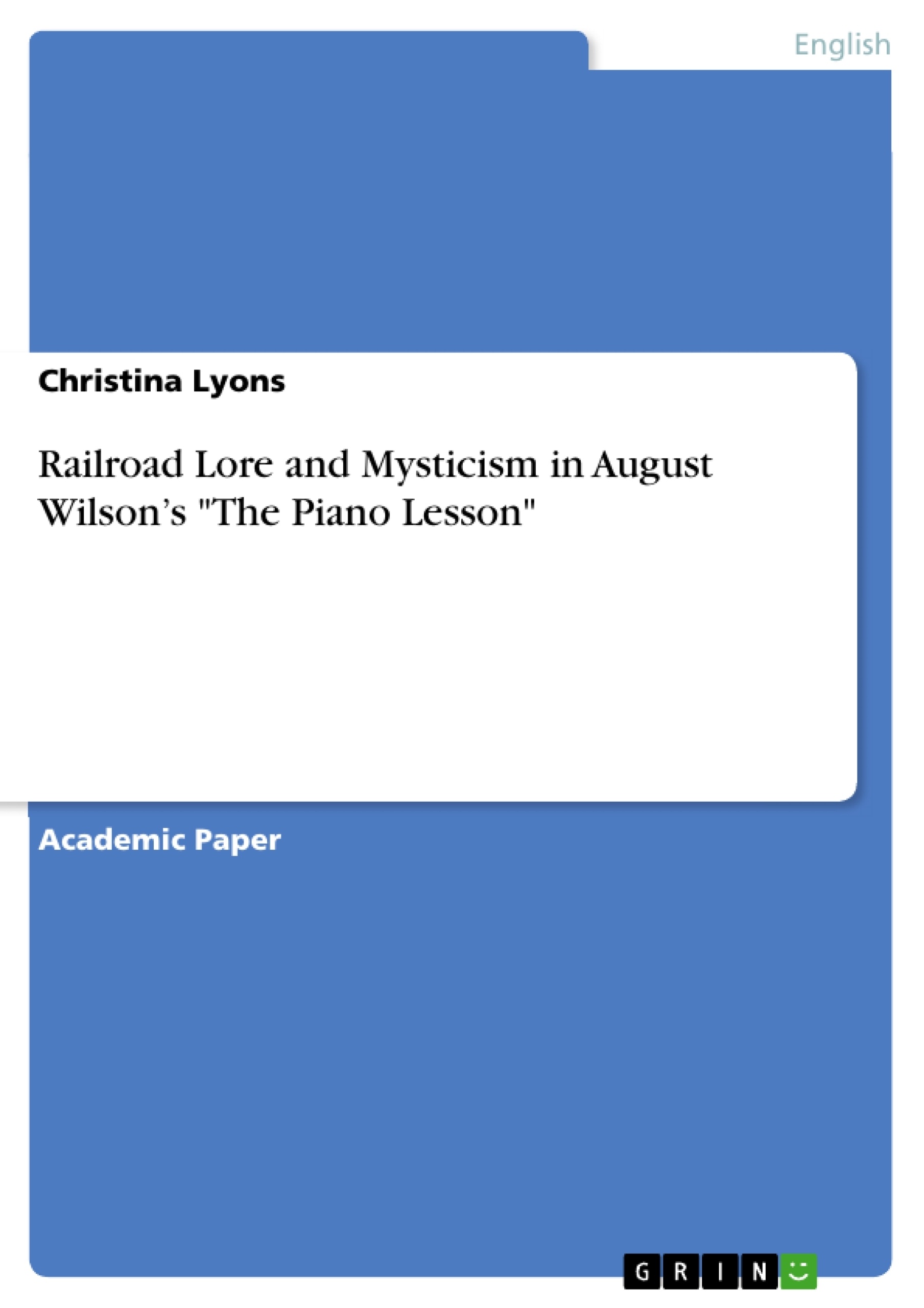August Wilson’s The Piano Lesson (1987) which plays in Pittsburgh in the kitchen and parlor of a railroad cook’s house in 1936 is the third drama of his cycle of an investigation of Black Americans’ lives in the U.S. after slavery.
Boy Willie travels with a friend to his uncle’s, a railroad cook’s, house where his sister Berniece lives, in order to sell their mutual heirloom, a piano bearing carved life scenes and faces of their ancestors, to buy the dead slave owner’s land for farming. Two of their ancestors once were sold as slaves for the price of this piano, and their father ultimately had been burned in a railroad car of the Yellow Dog for stealing the piano he conceived as family possession. The almost deadly argument between brother and sister ends in not selling the piano, after Boy Willie had to fight the ghost of the murdered slave owner, and Berniece saved his life by playing an exorcism song on the piano she had not dared to touch for years.
Wilson’s characters make gothic experiences at the famous railroad crossing at Moorhead, MS, where allegedly the ghosts of the Yellow Dog talk back to the seeker. Says Wining Boy, the musician: “The train passed and I started to go back up there and stand some more. But something told me not to do it. I walked away from there feeling like a king. Went on and had a stroke of luck that run on for three years.” (35) What do ancient African sacrificial rites have to do with American railroad lore? This review paper will focus on the importance of railroad music in The Piano Lesson, and the mystical veil covering the railroad crossing, “where the Southern crosses the Yellow Dog.”
Table of Contents
- Introduction: The Spirit World, and Finding One's Self
- Where the Southern Crosses the Yellow Dog: The Spirit World and Railroad Lore
- The Ghosts of the Yellow Dog
- The Piano Lesson
- The Metaphysical Presence of a Spirit World
- The Im improbable and Unlikely
Objectives and Key Themes
This paper examines the role of railroad lore and mysticism in August Wilson's play The Piano Lesson. It explores how the play's characters navigate their identities, past traumas, and the haunting presence of the past in a world shaped by slavery and its legacy. It investigates the intersection of African rituals and American railroad folklore, highlighting the significance of music, particularly in the context of the play's climactic exorcism scene. The paper also delves into the supernatural elements, which contribute to the play's unique blend of realism and gothic themes.
- The search for identity and reconciliation with the past
- The power of music and its role in personal transformation
- The enduring presence of slavery and its impact on contemporary African American life
- The intersection of African rituals and American folklore
- The presence of the supernatural and its influence on the characters' actions
Chapter Summaries
The Introduction delves into the central themes of identity, historical consciousness, and the power of music in The Piano Lesson. It introduces the characters and their struggles, particularly Wining Boy, who grapples with his identity as a musician and the loss of his past successes.
The chapter titled "Where the Southern Crosses the Yellow Dog: The Spirit World and Railroad Lore" explores the historical and mystical significance of the railroad crossing where the Southern Crosses the Yellow Dog. It examines the lore associated with this place, where spirits are said to communicate with the living, and its connection to the play's central conflict.
The chapter on "The Ghosts of the Yellow Dog" examines the role of the ghost of a former slave owner in the play. It explores the supernatural aspect of the conflict between Boy Willie and his sister Berniece, focusing on the presence of the past and its impact on their choices.
The chapter titled "The Piano Lesson" focuses on the significance of the piano as a symbol of family heritage, ancestry, and the weight of the past. It highlights the play's exploration of the "Who Am I" and "Where do I come from" themes, particularly in the context of Boy Willie's ambition and his sister's connection to their family's legacy.
The chapter titled "The Metaphysical Presence of a Spirit World" examines the role of the supernatural in August Wilson's works, highlighting the recurring theme of a spirit world that characters turn to in moments of crisis. It explores the play's use of African ancestor worship and its connection to resolving earthly problems through spiritual forces.
Keywords
The primary focus of this paper is August Wilson's The Piano Lesson. It investigates the themes of African American identity, family history, and the lasting impact of slavery. The paper analyzes the role of railroad lore, particularly the mystical crossing where the Southern Crosses the Yellow Dog, and the role of music, especially the exorcism song performed by Berniece on the piano. The supernatural elements, including the ghosts of the past and the presence of African ancestor worship, are key areas of focus.
- Quote paper
- Dr. Christina Lyons (Author), 2006, Railroad Lore and Mysticism in August Wilson’s "The Piano Lesson", Munich, GRIN Verlag, https://www.grin.com/document/1132805



